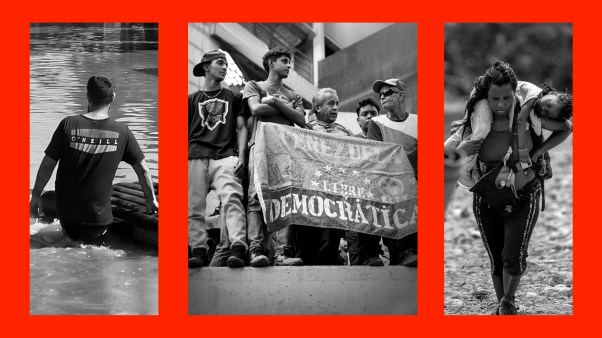
Terry Firma recently raised a provocative question through Hemant Mehta’s “Friendly Athiest” channel on Patheos.com: Do all religions—not just Catholicism—produce more than their fair share of child sex abusers?
He says yes. Unfortunately for him, it’s just not true. His methodology and logic are flawed. And the general evidence and expert opinions on the subject don’t at all suggest religiously affiliated adults are more likely to sexually abuse children than other adults.
But, unfortunately for religious leaders, especially Christian pastors and church leaders, his piece still implicitly raises a damning (and related) question: Why don’t we see fewer than our fair share of abuse cases?
We’ll explore the latter (and frankly, more important) question in a moment because, per Christ’s mandate to protect the most vulnerable in our midst (Matthew 18:6), we’re committed to eliminating child abuse.
But first, let’s consider Firma’s argument.
Because My Google Alerts Say So
As the founder of a blog called Moral Compass, Firma says his question and the resulting conclusion are fair game. He bases this on his daily work throughout the past six months tracking media coverage of child sex abuse nationwide, along with the long-running scandal of abuses within the Catholic Church. Firma cites several examples, including a decades-long cover-up of cases at a high school operated by a Jewish university and numerous articles detailing child abuses in the Islamic community.
Like many of us in media, Firma presumably uses Google Alerts or news databases to help him find these headlines. So surprised was Firma about the regularity of such reports, that he began tagging his blog posts with the faith involved when he published them. By doing so, he says he now sees just as many Protestant, Jewish, and Islamic cases as Catholic ones:
(S)ometimes I almost feel sorry for the Catholic Church, because it’s beginning to seem to me that the abuse is widespread throughout the world of religion (and beyond). And I think it isn’t just selective perception or confirmation bias.
Except for one problem. It is selective perception. Firma says so earlier in his piece when he acknowledges his six-month review involved “very close attention, every day, to reports of sex crimes by clergy” (third emphasis added by me).
In other words, he’s using anecdotal evidence drawn solely from one specific segment of society, not all segments. That simply doesn’t work when considering his overarching premise: That religions produce “more than their fair share” of abusers. We’re never told quite what “more than their fair share” means, so we’re left to assume—relatively safely, I think—that he means more than the rest of the adult population in the country.
Using that premise, why isn’t he tracking all cases of child sex abuse in the country, clergy included? Otherwise, how can we determine what’s “more than” religions’ “fair share” of crimes committed when we have no frame of reference regarding what’s happening amidst the broader population?
To take this a step further, as I assessed Firma’s thoughts last week, I conducted a mini-version of his approach. Except instead of using “clergy” with “child sex abuse,” I used “teacher,” “police officer,” and “firefighter.” The results: Police officers from Oregon to Oklahoma to Tennessee; firefighters from California to Alabama to Texas to Idaho; and teachers from Pennsylvania to Texas to California to Colorado, each facing charges for heinous acts they’ve allegedly committed against children.
Nearly all of their arrests happened within the past few weeks.
To my knowledge, no public database effectively tracks the backgrounds of convicted offenders in a way that reveals their occupations. State and national registries typically provide individual offenders’ residences, photos, and crimes committed. But were such a tool to exist, or were a more earnest effort with anecdotal media reports to occur, we would find a much different reality than Firma wishes to present: Child sex abuse is rampant throughout our entire society.
It isn’t a religion problem. It is a human-being problem.
Newsweek correspondent Pat Wingert’s article on The Daily Beast seemed to support this conclusion a couple of years ago when she cited varying studies and sources regarding the rate of abuse within religious faiths and the general population.
Nonprofit advocacy groups and federal agencies also point out there is no one subset of the adult population more prone to offending than another. The 54-year-old Childhelp demonstrates caution when categorizing the nature of offenders, stating, “Child abuse occurs at every socioeconomic level, across ethnic and cultural lines, within all religions and at all levels of education.”
The U.S. Department of Justice’s free, online sex-offender national registry echoes similar sentiments in its Frequently Asked Questions:
The people who sexually abuse can be immediate or extended family members (fathers, mothers, stepparents, grandparents, siblings, uncles, aunts, cousins, etc.). They can be neighbors, babysitters, religious leaders, teachers, coaches, or anyone else who has close contact with children.
Fact: In as many as 93 percent of child sexual abuse cases, the child knows the person that commits the abuse.
In other words, people in positions of trust, without proper accountability and boundaries, can prey upon children. It happens in churches and synagogues and mosques. It happens in schools. It happens in youth-serving organizations and youth sports leagues. And it happens in homes, apartments, and condominiums. It happens so much so that one group estimates 3 million children nationwide are abused every year.
No one has a monopoly on the production of offenders.
So Why Are There Cases at Churches?
While I disagree with Firma’s view that houses of worship are “breeding grounds” for child rapists, and I believe the manner in which he reaches his conclusion is erroneous, one troubling question remains: Why is the rate of cases about the same for the religious community?
One possible explanation is that child abusers target opportunities that allow them to groom potential victims, churches included.
Through my work the past six years—and I’ll limit these remarks to what I see, hear, observe, and study in the Protestant evangelical realm, since that’s the one I’ve most closely followed—we’ve seen too many instances where poor screening and interviewing processes lead to problems. We’ve also seen instances in which churches responded too late to allegations, ignored numerous warning signs, or failed to properly train staff and volunteers because they believed “it could never happen here” or they needed “to show mercy and grace.” In a 2008 survey of 704 church leaders, we learned 51 percent had written policies for preventing child sex abuse, 26 percent did not, and 23 percent didn’t know.
Many predators know these realities and wish to exploit them, some within roles as pastors or staff members, but more so as volunteers or regular attenders who work to gain trust and look for vulnerabilities.
In each edition of Church Law & Tax Report, we list “Recent Developments” involving state appellate and federal court decisions that affect churches. This work is led by Richard Hammar, a well-regarded attorney and CPA and our senior editor, who reads about 12,000 case decisions each year and catalogs them. Sadly, the perennial number one reason churches end up in court is due to a child abuse allegation (although the overall percentage of such cases has slightly decreased in recent years, which is somewhat encouraging).
That’s the shame of the past two generations of church leaders. We haven’t taken the threat seriously enough, nor have we always taken the right action when we’ve uncovered atrocities committed by our own or under our watch.
It’s why Hammar developed the Reducing the Risk child abuse prevention training program 20 years ago for churches and it’s why he remains at the forefront today urging church leaders to remain vigilant, whether it’s through knowledge of child-abuse reporting laws reports or the practical application of new best practices brought to light by Louis Freeh’s special report after the Jerry Sandusky scandal at Penn State University.
The best practices are too numerous and detailed to list here, but if your church isn’t interviewing pastoral, staff, and volunteer applicants and running detailed background checks on them, and if it isn’t requesting written institutional references from previous employers or places where they worked with youth that verifies their conduct was without blemish, then immediate action is needed. Other steps, including the two-adult rule, the six-month rule, and boundaries for contact with minors inside and outside of church functions are other musts.
Firma incorrectly asserted that religions cause more cases of child abuse than the rest of society. However, churches should be setting the example to the world, taking steps that lead to fewer cases than the rest of society. Hammar often points out, “churches are not ‘guarantors’ of the safety and well-being of children. They are not absolutely liable for every injury that occurs on their premises or in the course of their activities. Generally, they are responsible only for those injuries that result from their negligence.”
It’s time that negligence turned into action.
Matthew Branaugh is director of editorial for Christianity Today’s Church Law & Tax Group, which aims to provide articles and resources that help churches stay safe, legal, and financially sound.









